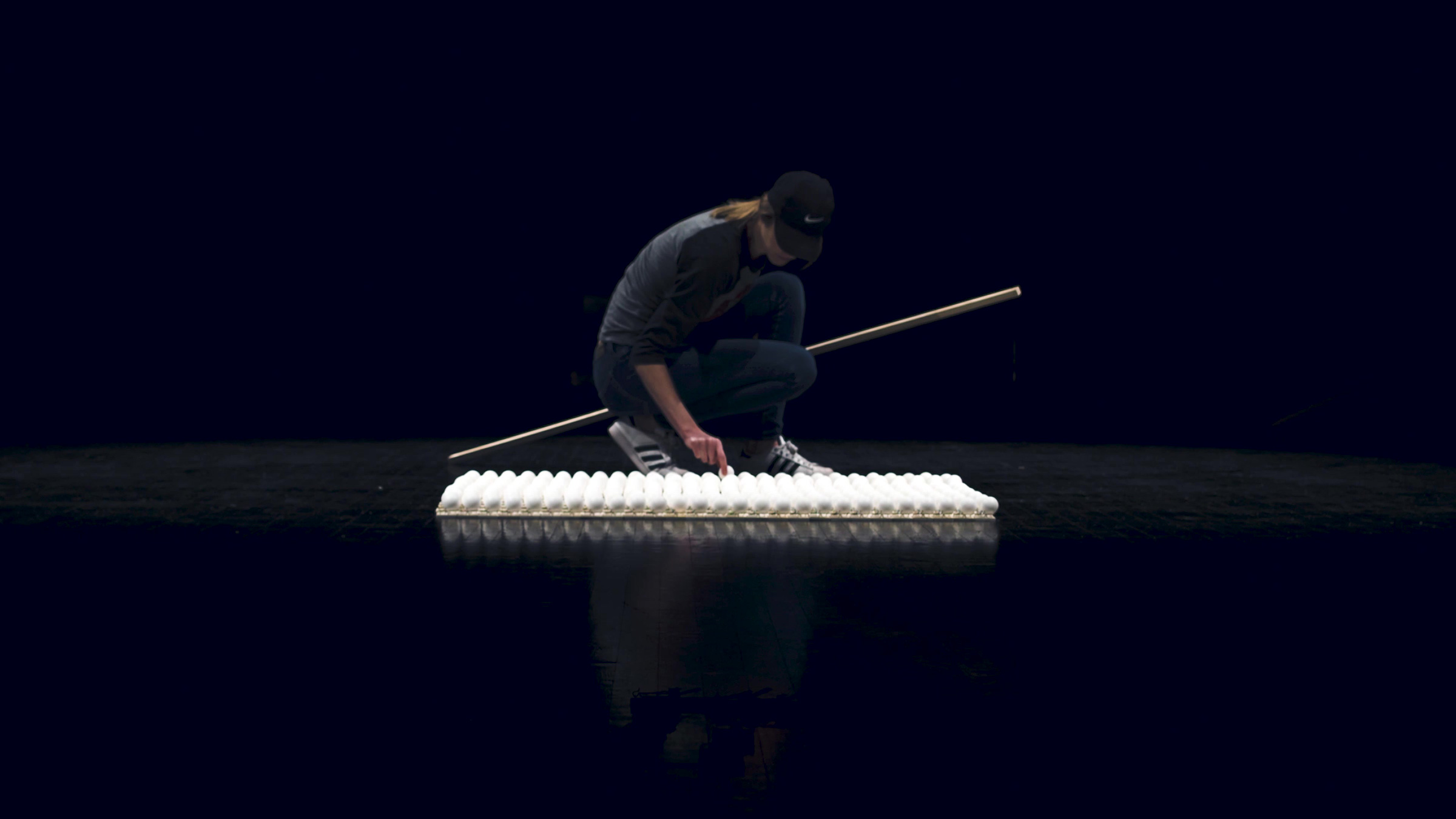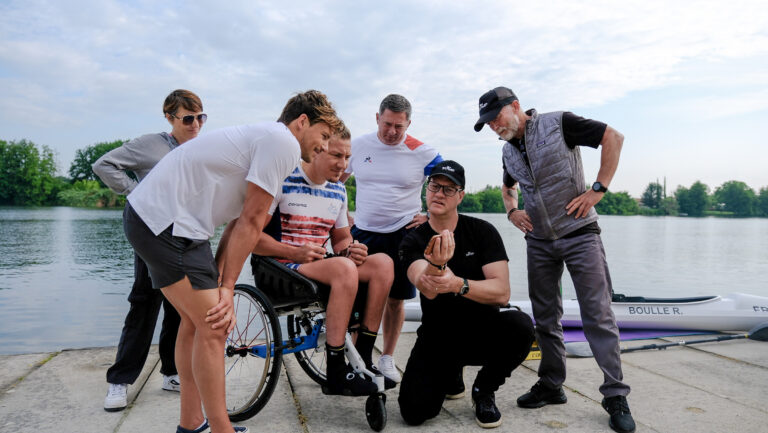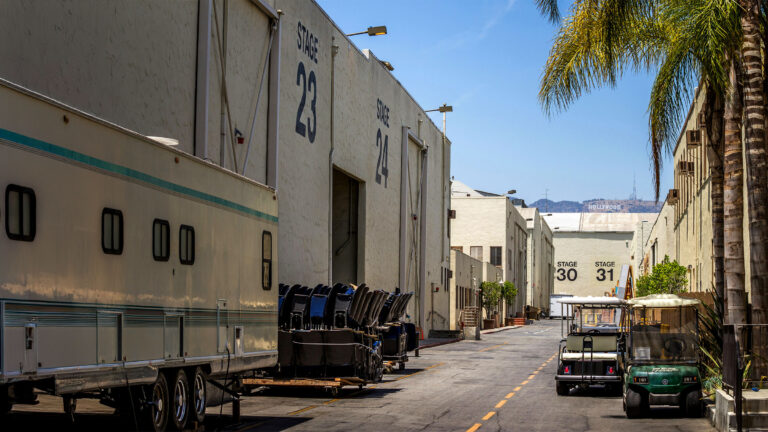“Relax. It’s just a commercial. No one will die,” said anyone who’s ever worked in television advertising.
Tight deadlines and budgets, too many rounds of revisions, clients nitpicking over how many frames the product needs to be on the screen. Sometimes you just need some perspective.
But what if a commercial could actually help save lives?
In this installment of “Made in Frame,” we have the pleasure of going behind the scenes with the team at Dayton-based agency Real Art, who created one of the most compelling and important pieces of advertising in recent years—while socially distancing and working from home.
Commissioned by the Ohio Department of Health, the :30 PSA titled “Space Makes Us Safer,” uses a simple and powerful visual metaphor to illustrate the importance of social distancing during the COVID-19 pandemic. The explosive chain reaction that occurs when 500 closely spaced mouse traps are set off with a ping pong ball not only resonated with Ohioans, it actually went, well, viral.
Racking up over 22.5 million views on Twitter, plus another 121.1 million on Facebook worldwide, Real Art may be responsible for creating a message so universal and so unforgettable that it may actually have helped save lives.
A tight deadline
Like so many commercials, this one presented some familiar challenges. The timeline was almost impossibly tight—though in fairness, it was because getting the message out as quickly as possible actually was a matter of life and death.
But the challenge of creating a spot from concept through delivery during a pandemic is next level.
How do you shoot a spot on a set with a complex practical effect when you have to socially distance? How do you collaborate with creatives in different parts of the city—and get the kind of input and feedback you need to make a mini-masterpiece—if you can’t be together in the office?

With only two days to prep, two days to shoot, and two days to edit a spot that under ordinary circumstances would have taken three weeks (or more), the lean team at Real Art got creative.
Real Art founder and creative director Chris Wire knew that the concept had to be simple and powerful. He wanted it to be obvious to anyone, who spoke any language. And then he remembered the mouse trap/ping pong ball experiment educators use to illustrate a nuclear fission chain reaction.

Ingeniously, Chris came up with the idea of showing what happens when the traps are crowded together, but then takes it a step further by comparing that to what happens when they’re spaced a safe distance apart.
The result is an elegant metaphor for social distancing. Director Andy Nick’s first thought had been to do it in CG, which Chris quickly rejected. “I believed it had to be done practically for authenticity’s sake,” he says.
“When Chris told me that we needed 3,000 mouse traps and ping pong balls, I just thought, ‘Okay! We can do this,’” said producer Alison Westfell. “Because this happened after the lockdown, I knew that shipping non-essential items could be iffy. But I found sources for the traps and the balls, who each assured me that they could deliver before our scheduled shoot on Monday morning.”

Long story short, when Monday morning arrived, there were no mouse traps. And the ping-pong balls were the wrong size. Alison called around and discovered that the Dollar Tree stores carried mouse traps, so she and the team drove across the Dayton area, hitting all the stores for as many traps as they could get. They found exactly 500. Dick’s Sporting Goods supplied the right sized ping pong balls.
Then came the process of sanding off the logos on the balls and traps—not necessarily part of a producer’s job description, but Alison is no ordinary producer. “I can’t operate a camera or edit, but if i can help my team focus on what they need to do, I’m happy to do whatever it takes,” she says. It’s also a fitting sentiment for a project with an end title that reads #inthistogetherOhio.

Practicing what they were preaching by running the smallest possible crew, Alison, along with Andy and DP Philip Heiss, used a local theater space that was dark because of the pandemic for their set. The three spent their first shoot day setting the traps—losing most of the morning’s work when an accidental chain reaction started. “I heard a sound,” Philip said. “It was the sound of wasted time.”
Setting 500 traps, especially while socially distancing, was a tedious process requiring steady hands and patience. “It turned out to be a good thing that we didn’t receive the 3,000 traps we ordered,” Alison says.

Philip functioned as his own gaffer, AC, and sound recordist, while controlling four Sony F7s shooting at 180fps in HD. Because having to reset traps between takes would be too time consuming, getting more coverage was important.
After spending nearly eight hours on setup, the 5’ x 5’ grid of traps took almost no time to completely erupt when the single ping pong ball dropped in. “We honestly didn’t know what to expect,” Philip said. “The floor actually shook. It was really chaotic and violent, and we were trying not to get hit by mouse traps.”

Day one of the shoot yielded approximately 20 seconds of footage from the four cameras combined. On the second shoot day, having quickly learned how labor-intensive setting up the traps could be, they opted to do smaller setups with fewer traps that could be shot with tighter framing to use for intercutting. “We just made sure that we always filled the frame,” Philip says. “We used a downshooter and set up 50 traps to drop the ball into. We also shot the single ball dropping through black space.” By cleverly planning the shots, they managed to shoot almost everything they needed as a practical, amassing only 10 minutes of total footage.
“After having set off the traps accidentally on day one,” Philip says, “we took extra precautions on day two. For the final shot with the distanced mousetraps, we superglued them so that if we missed getting the shot where the ball skips through without setting off any traps, we wouldn’t have to reset them.” It turns out that it was an unnecessary precaution because Andy nailed the toss on the first try.
Working together when you’re not
Andy also served as editor for the spot, so once the footage had been downloaded to a drive, he took it home with him and worked from his basement setup. Using Premiere Pro, he completed all aspects of the post himself, including sound design.

“It wasn’t an easy edit,” Andy said. “I put together a first cut and sent it over to Chris. Let’s just say that his reaction was less than totally enthusiastic. After the first day of editing, Chris wanted other people to see the cut to weigh in, so we sent Frame.io Review links out to our ‘extended family’ of trusted collaborators.”
Real Art has used Frame.io for several years, originally as a client feedback portal. But once Chris saw how powerful it was and how much value it could bring to their workflow, they started using it among the team internally. It was easy for them to keep the communication flowing between team members who were on the go—especially because they all spoke the same language and were able to leave detailed notes.

Because this project needed quick feedback that was very specific, Frame.io played a huge role in the editing process. “The timing of each shot was super important,” Andy said. “It was a finesse piece. Sharing it back and forth to perfect the timing was essential, and we were able to do it frame accurately.”
Chris isn’t really a work-from-home guy by nature. He relies on human interaction, on the spontaneous ideas that come up in casual conversations as team members talk about non-work things. And for Andy, whose desk is next to Philip’s when they’re in the office, he’s accustomed to Philip just looking over his shoulder as he works.
“Frame.io lets you leave feedback that’s both technical and emotional. It felt like my coworkers really were there over my shoulder,” Andy said. “At a time when we were all so disconnected, Frame.io felt like we were having a conversation with everyone in the room. It was the first time since going remote that I felt like my coworkers and I were on the same page.”

By sharing the cut with their trusted collaborators on Frame.io, the team was able to get an essential bit of unanimous feedback: the scale of the overhead shot wasn’t large enough to really drive home the scope of the pandemic.
In one of only two shots that needed some post VFX help, they used the Frame.io annotation tool to draw on the edit to clearly delineate how the shot needed to be composited to achieve the effect. Then, using After Effects, Andy was able to do a set extension to give it the scale Chris had originally envisioned.
“When you send a Review link to someone, they know that you’re trying to start a conversation and that you’re sending it to them with intention,” Andy says. “They know that you want real feedback—not just a pat on the back. We always use Frame.io as part of our process, but on this project, it was the key for communication.”
Going viral—in a good way
After two days of editing, the client approved the cut, it went live, “And it exploded,” Andy said.
Not only did the spot go viral on social media, but the Ohio Department of Health and Real Art also started getting requests from other markets in the U.S.—and even from other countries—to customize the spot for air. Chris’s strategy of designing it to be universally understood with nothing but a simple title card had succeeded beyond all expectations.

“Everyone was looking at the same thing. Everyone who sees it, gets it. A good PSA means a lot without saying a lot,” Andy explained. “The metaphor of the chain reaction is clear and memorable, and at a time when people feel powerless, it empowers them to feel as though they have some control and actually can make a difference.”
To say that the team was surprised by the overwhelming response would be a gross understatement. According to Philip, “I’ve never before received the kind of views and compliments on something I’d shot.” Andy agrees. “We were getting all sorts of great responses from people whose work we admired. It was amazing.”
To date, they actually have no concrete idea how many people they’ve reached or how many times the spot has been viewed. “We know that between Facebook and Twitter we’re over 150 million, but that doesn’t even count how many times the spot’s been shared around,” Andy said.
The Ohio Department of Health initially approached Real Art to take on this project because, Chris explained, “Real Art is about finding the moment of wonder. They came to us because they expected us to find a way of solving this problem differently.”

“It takes a brave client to allow good work to be done,” Andy says. “This wasn’t a traditional approach to a PSA, but it really touched a lot of people.”
From the short timeline to finding the right concept, to executing during a global pandemic, Real Art had plenty of problems to solve along the way. “We didn’t have a big crew, but had the right crew. We didn’t have a lot of tools in our arsenal, but we had the right ones,” Philip said. “And we knew that we just had to trust each other to do our best and to trust our guts. We didn’t have time to go back and forth.”
Which meant that getting clear, quick feedback was vital to getting this project to the finish line. “We basically had to exponentially increase the speed at which we produced this,” Philip said. “Communicating clearly across a distributed team of people became even more important. That’s why Frame.io was so essential to this project.”
Still, as Andy points out, “The best ideas are the ones where someone sees it and thinks, ‘Of course!’ And those are often the ones that are hardest to pull off. But this spot succeeded because of the strength of the idea. The tech was secondary.”
Certainly the entire team is thrilled by the outcome. “We always love working on projects,” Andy says. “But to do something that was shared worldwide? And to maybe save a couple of lives along the way? That’s unreal.”

Keeping the broader perspective is also something that the Real Art team does well. “While we’re happy that people are still talking about this spot, what we hope is that someday, in the not-too-distant future, people won’t have to talk about this spot anymore because the pandemic will be behind us.”
Creating a PSA that cuts through the noise and delivers a clear, serious, actionable message proves that you can never underestimate the power of a :30 story told well. And, also, that sometimes advertising actually may be a matter of life and death.




